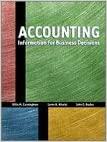Required information [The following information applies to the questions displayed below.) Preble Company manufactures one product. Its variable manufacturing overhead is applied to production based on direct labor-hours and its standard cost card per unit is as follows: Direct materials: 5 pounds at $9 per pound Direct labort 3 hours at $14 per hour Variable overhead: 3 hours at $9 per hour Total standard cost per unit The planning budget for March was based on producing and selling 20,000 units. However, during March the company actually produced and sold 24,800 units and incurred the following costs: a. Purchased 155,000 pounds of raw materials at a cost of $7.20 per pound. All of this material was used in production. b. Direct laborers worked 65.000 hours at a rate of $15 per hour c. Total variable manufacturing overhead for the month was $612,300. 13. What variable manufacturing overhead cost would be included in the company's flexible budget for March? Variable manufacturing overhead cost Required information [The following information applies to the questions displayed below.) Preble Company manufactures one product. Its variable manufacturing overhead is applied to production based on direct labor-hours and its standard cost card per unit is as follows: Direct materials: 5 pounds at $9 per pound Direct labor: 3 hours at $10 per hour Variable overhead: 3 hours at $9 per hour Total standard cost per unit The planning budget for March was based on producing and selling 20,000 units. However, during March the company actually produced and sold 24,800 units and incurred the following costs: a. Purchased 155,000 pounds of raw materials at a cost of $7.20 per pound. All of this material was used in production b. Direct laborers worked 65,000 hours at a rate of $15 per hour. C. Total variable manufacturing overhead for the month was $612,300. 14. What is the variable overhead rate variance for March? (Round the actual overhead rate to two decimal places. Indicate the effect of each variance by selecting "F" for favorable, "U" for unfavorable, and "None" for no effect i.e., zero variance.). Input all amounts as positive values.) Variable overhead rate variance Required information The following information applies to the questions displayed below.) Preble Company manufactures one product. Its variable manufacturing overhead is applied to production based on direct labor-hours and its standard cost card per unit is as follows: Direct materialst5 pounds at 59 per pound Direct labort 3 hours at $14 per hour Variable overhead 3 hours at 59 per hour Total standard cost per unit The planning budget for March was based on producing and selling 20.000 units. However, during March the company actually produced and sold 24,800 units and incurred the following costs: a. Purchased 155,000 pounds of raw materials at a cost of $7.20 per pound. All of this material was used in production b. Direct laborers worked 65.000 hours at a rate of $15 per hour. c. Total variable manufacturing overhead for the month was $612,300. 15. What is the variable overhead efficiency variance for March? (Round the actual overhead rate to two decimal places. Indicate the effect of each variance by selecting "F" for favorable, "U" for unfavorable, and "None" for no effect (ie, zero variance.). Input all amounts as positive values.) Variable overhead officiency variance The auto repair shop of Quality Motor Company uses standards to control the labor time and labor cost in the shop. The standard labor cost for a motor tune-up is given below: Standard Standard Hours 2.50 Standard Rate $36.00 Motor tune-up $90.00 The record showing the time spent in the shop last week on motor tune-ups has been misplaced. However, the shop supervisor recalls that 56 tune-ups were completed during the week, and the controller recalls the following variance data relating to tune- ups: Labor Late variance Labor spending variance $400 F $ 500 Required: 1. Determine the number of actual labor-hours spent on tune-ups during the week. 2. Determine the actual hourly rate of pay for tune-ups last week. (Round your answer to 2 decimal places.) Actual labor 2 Actual hourly rate










